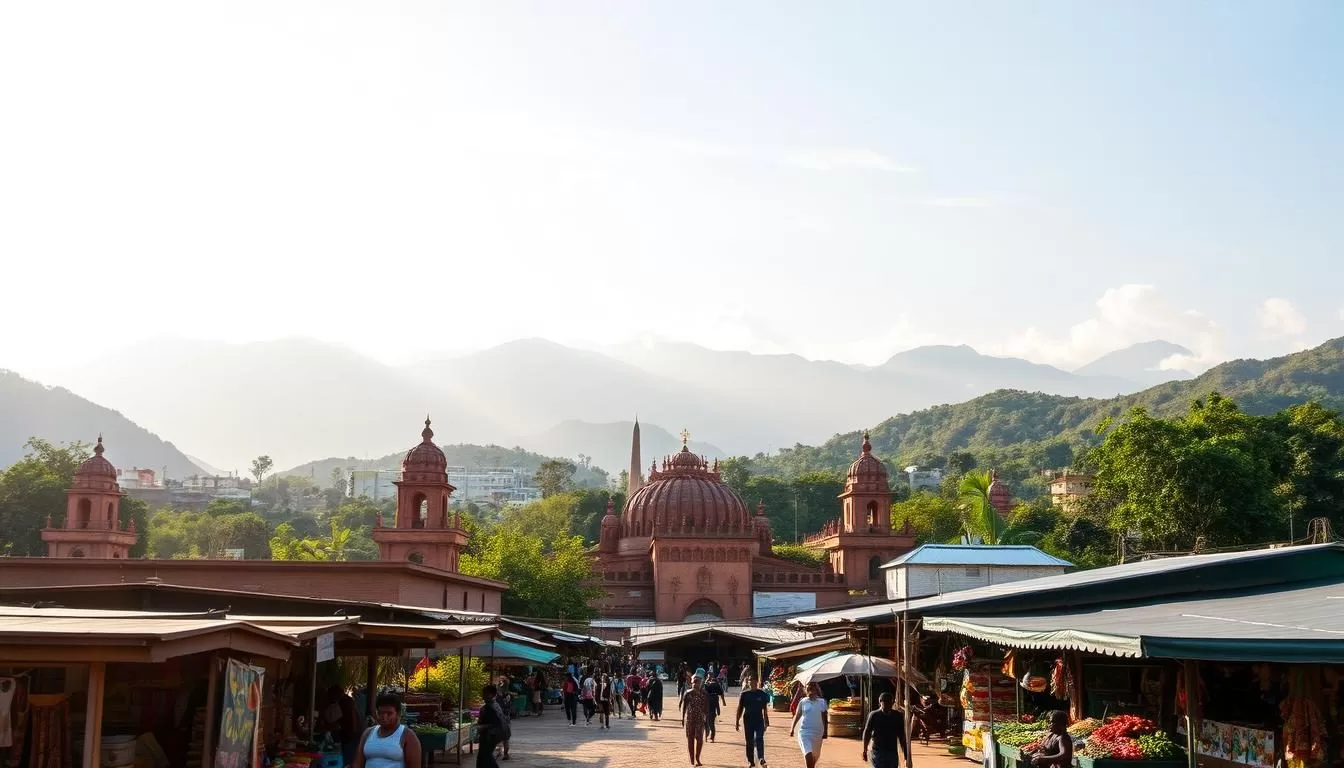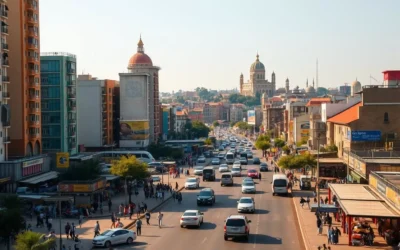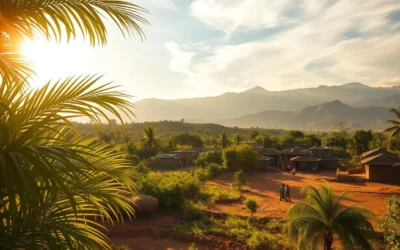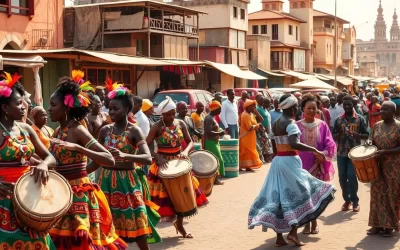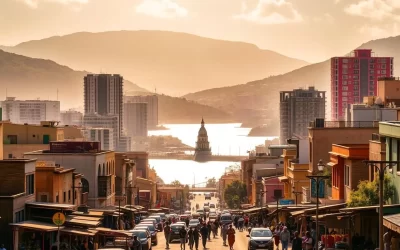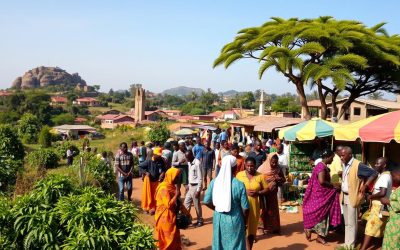✓ Accommodations✓ Flights✓ Rental Cars
Guinea, a hidden gem in West Africa, promises an unforgettable travel experience. With its lush rainforests and vibrant culture, there’s something for every kind of traveler.
However, the country’s dramatic seasonal changes can significantly impact travel conditions. When it rains, roads quickly become impassable, and activities come to a halt. So, understanding the best time to visit is crucial.
You’ll want to know how Guinea’s unique geography creates distinct climate zones, affecting the accessibility of different regions throughout the year. This guide will help you navigate these conditions and make the most of your trip to Guinea, regardless of when you visit.
Understanding Guinea’s Climate Patterns
Guinea’s weather is dominated by a simple yet impactful two-season climate, which travelers should be aware of to plan effectively. This understanding will help you make the most of your trip.
The Two-Season System
Guinea has a two-season climate, with the dry season spanning from October to April and the wet season covering the rest of the year. The dry season brings predictable sunny days with temperatures often reaching up to 32°C (90°F), making it the preferred time for most travelers. The harmattan, a hot, dry wind from the Sahara, affects the country during this period, bringing increased heat and sand.
Regional Weather Variations
The country’s topography creates significant regional weather variations. The Atlantic coast experiences much heavier rainfall than the northern and eastern regions, with coastal areas receiving up to four meters (160 inches) of rainfall annually. In contrast, the mountainous interior offers cooler nighttime temperatures during the dry season, providing relief from daytime heat. 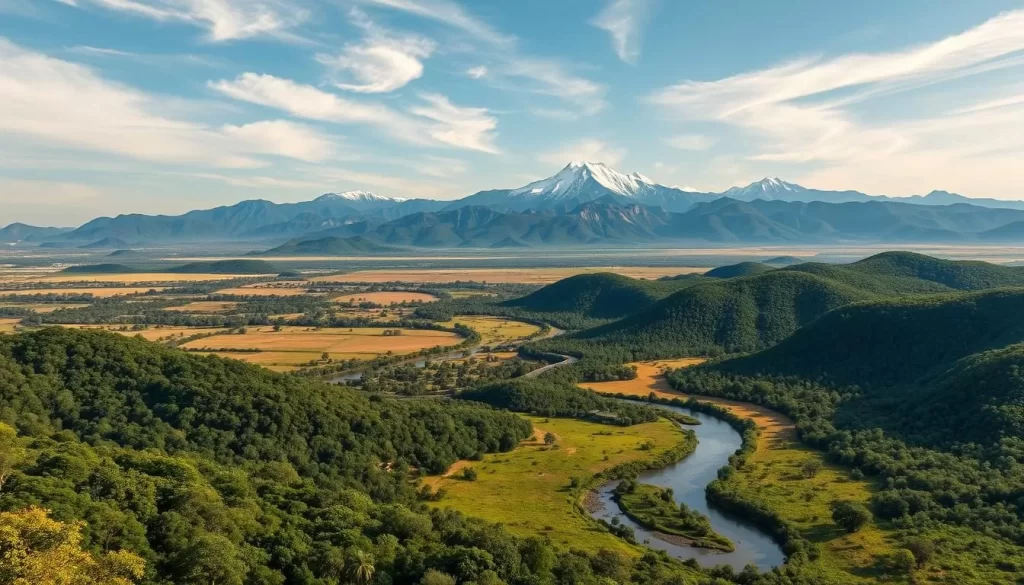
Understanding these climate patterns is essential for planning activities, as weather conditions directly impact accessibility to various attractions and regions within the country. By grasping these variations, you can better plan your trip to Guinea.
Dry Season: The Prime Time for Guinea Travel
The dry season is considered the best time to visit Guinea for an unforgettable adventure. This period, which spans from November to April, offers the most favorable conditions for travelers.
November to February: The Golden Period
December, January, and February are the core months of the dry season, characterized by sunny skies and warm to hot days, with temperatures sometimes reaching 32°C (90°F). Nights are cool, especially in the mountainous regions, providing a welcome respite from the daytime heat. This “golden period” is ideal for exploring Guinea’s diverse attractions, such as hiking on Mount Nimba or visiting remote villages.
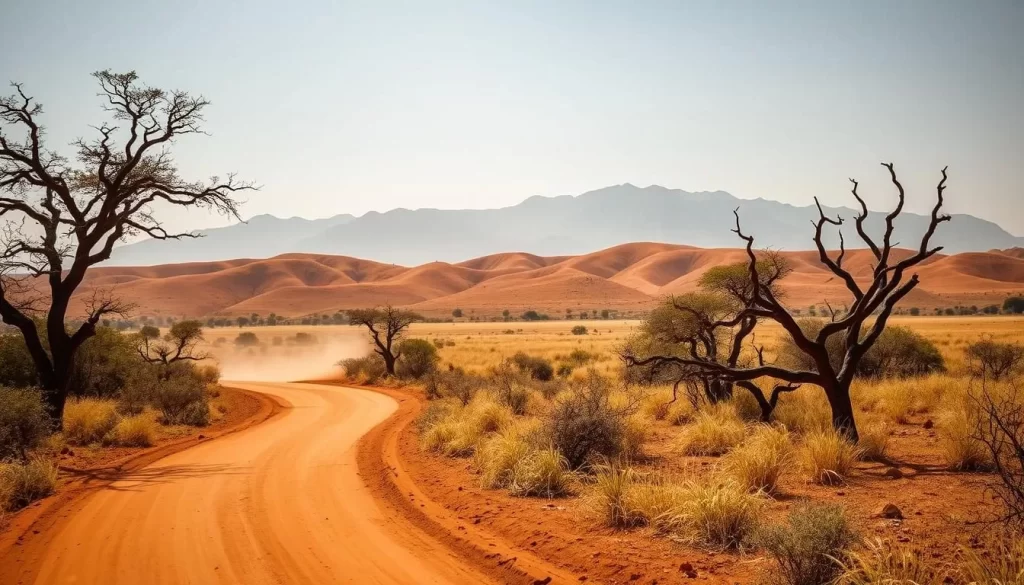
March to April: Transition Months
As the dry season transitions into the wet season, March and April bring increasing humidity and occasional early showers, particularly in the latter part of April. Despite these changes, these months still offer good travel conditions, with the added benefits of fewer tourists and lush landscapes.
| Month | Weather Conditions | Travel Conditions |
|---|---|---|
| December to February | Sunny skies, warm to hot days | Ideal for hiking, visiting remote villages |
| March to April | Increasing humidity, occasional showers | Good travel conditions, fewer tourists |
Wet Season: What to Expect and When to Avoid
The wet season in Guinea, which spans from May to October, brings significant rainfall that transforms the landscape. While it’s generally considered a challenging time to travel, this period also offers unique cultural experiences and a lush, green landscape.
May to June: Early Rains
During May and June, Guinea experiences the early stages of its wet season, with increasing precipitation that begins to affect travel plans and road conditions. The rain starts to make its presence felt, particularly along the Atlantic coast, where the capital city Conakry is located. Travelers should be prepared for muddy roads and potential travel delays.
July to September: Peak Rainfall
The peak of the wet season occurs from July through September, with torrential downpours that can last for days. This period sees the heaviest rainfall, with up to four meters (160 inches) of rain along the coast. The rain makes many roads impassable, severely limiting travel options. However, the landscape transforms into a lush, green beauty, with spectacular waterfalls and flowing rivers.
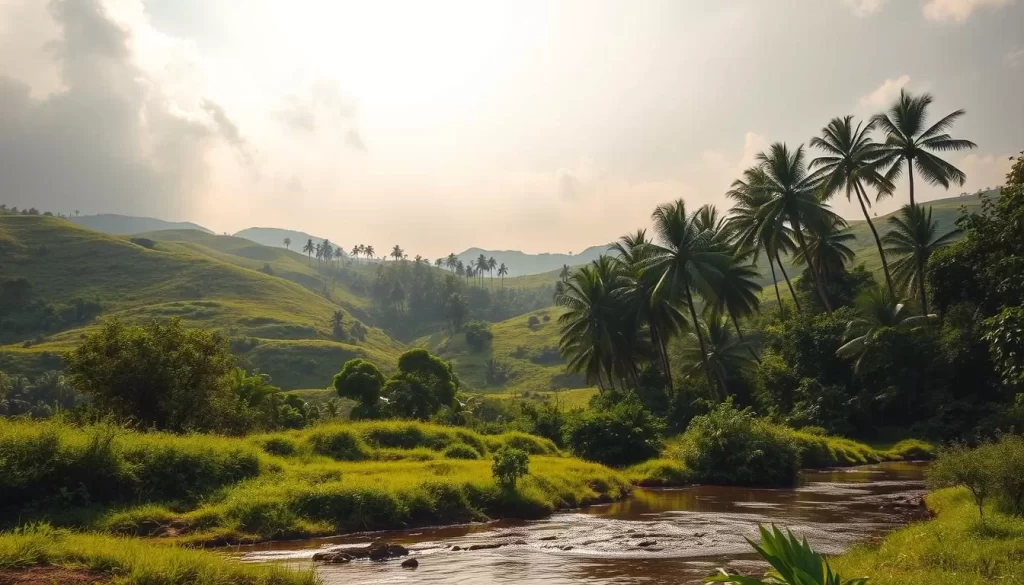
October: Trailing Rains
By October, the rainy season begins to wind down, with decreasing precipitation. However, unsurfaced roads remain waterlogged and muddy, making travel challenging. Despite this, the wet season offers a chance to experience Guinea’s vibrant culture through local festivals that feature traditional music and dance.
Some key points to consider during the wet season include:
- Heavy rainfall transforms Guinea’s landscape, making it lush and green.
- The coastal areas, especially around Conakry, receive the heaviest rainfall.
- Travel can be challenging due to muddy and impassable roads.
- The wet season offers unique cultural experiences through local festivals.
Planning Your Guinea Trip: Weather-Based Recommendations
The best time to visit Guinea largely depends on your travel preferences and what you want to experience. If you’re an adventure-seeker, the dry season is ideal for hiking and outdoor activities. For those interested in cultural experiences, the wet season offers a plethora of festivals and events.
Always check the local weather forecast before your trip to Guinea, as the weather can be unpredictable. Pack accordingly: light clothing for the heat and waterproof gear for the rain. Whether you visit during the dry season, the wet season, or the shoulder seasons, Guinea has something unique to offer. This guide helps you make the most of your travel experience.
By considering your priorities, whether they’re focused on comfort, specific activities, or cultural experiences, you can determine the ideal time for your trip. With these tips, you’re ready to plan an unforgettable journey to Guinea.
The above is subject to change.
Check back often to TRAVEL.COM for the latest travel tips and deals.
